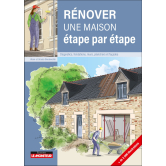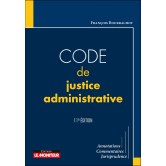La Métropole européenne de Lille sera capitale Mondiale du Design en 2020. Quel est le fondement de cette candidature ?
La Métropole lilloise est un territoire en constante mutation. Nous sommes une terre d'échange et de contraste et il nous faut de grandes échéances collectives pour orienter le destin commun de ces 90 communes qui comptent 1,2 million d'habitants. Nous sommes reconnus internationalement pour notre savoir-vivre, notre dynamique économique, culturelle ou sportive. Le Design était une évidence dans la mesure où il vient renforcer cette identité, notre culture de l'action, nos valeurs à la croisée du commerce, de l'industrie, et de la solidarité.
Ce sera donc une année riche pour l'architecture, l'urbanisme et le paysage ?
Oui, bien entendu, le Design, comme processus d'intégration des usages, est au cœur de la fabrication de la ville. Nous avons, en métropole lilloise, une histoire particulière dans le domaine. Moins contraints qu'ailleurs par le paysage ou le patrimoine historique, nos maîtres d'œuvre sont probablement plus libres. Mais nous prenons le Design dans sa définition la plus large possible. Comme une façon de travailler, de produire, de vivre ou d'habiter. C'est une méthode qui s'applique autant à l'objet qu'aux grandes politiques publiques. En ce sens, tout le monde est concerné.
Quelles seront les étapes et les lieux privilégiés pour les manifestations de 2020 ?
L'artère historique du Grand Boulevard, entre Lille et Roubaix-Tourcoing, pourra être un lieu de parade et de mise en lumière. Mais le programme va essaimer en de multiples endroits.
Différents parcours permettront de mailler le territoire pour que toutes les communes soient concernées. Certains seront thématiques -le numérique, les ressources naturelles, les services à la personne-, d'autres se déploieront en fonction des transports doux ou de la trame bleue de l'agglomération. Nous avons reçu 290 dossiers, appelés POC (Proof Of Concept) -d'une cours d'école à un centre-ville tout entier- actuellement en cours d'évaluation.
The Métropole Européenne de Lille has been designated World Design Capital for 2020. What was the background to this application?
The Lille Metropolitan Area is constantly changing. Ours is a world of interaction and contrast, and as an urban community, we need key collective deadlines to guide and focus the shared future of our 90 municipalities and their 1.2 million residents. The Major Events policy brings us together, boosts our appeal and generates dynamic new initiatives. Our personability and dynamic economy, cultural life and sporting achievement are all recognised around the world. So design was an obvious choice from the point of view that it reinforces this identity with its culture of action and the values it applies at the point where trade (and therefore interaction) and industry (and therefore hard work) intersect with solidarity.
So will 2020 be a year of remarkable events in architecture, planning and landscape?
Yes, of course, because design, as a process of integrating the ways in which it is used, is central to the process of building a city. In Lille, we have a distinctive history of design. Being less constrained by landscape or historical heritage than their counterparts elsewhere, our project managers probably have greater freedom to address the issues of how the city is used by its people. But we address design in its widest possible sense. As a way of working and producing, but also as a way of life that guides how we live and where we live. It's a method that applies equally to physical objects and major public policies. So in that sense, it affects and involves everyone. In 2020, every visitor to the World Design Capital will find something amazing and life enhancing.
What will be the key events and locations in the 2020 programme?
Well, the historic Grand Boulevard that is the main link between Lille and Roubaix-Tourcoing could be a venue for parades and spectacular lighting. But the programme will reach out to many different locations. A series of different routes will crisscross the urban community to ensure that all municipalities and towns are involved. Some will be thematic - digital, natural resources, personal services, etc. - while others will relate directly to soft transport or the blue grid that covers the urban area. We've received 290 PoC (Proof of Concept) project submissions ranging from a school play-ground to an entire town centre, and we're currently in the process of evaluating them all.








